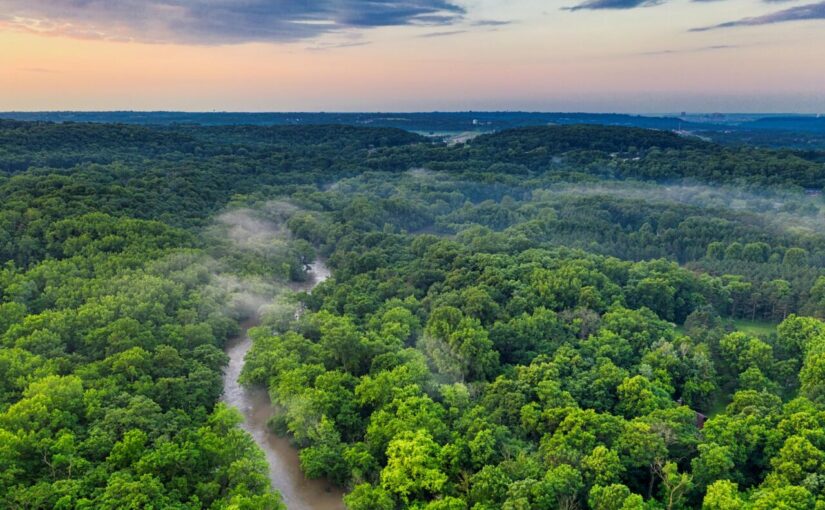Renzo Taddei shares with us his empirical experiences of communicating risk and response in the eighth blog in this series based on the IGDC/YESI Webinar event ‘Emergencies, wellbeing and social justice in the Anthropocene.’
Renzo Taddei’s research focuses on the socio-cultural dimensions of how humans relate to the atmosphere. Renzo joined us in this webinar to discuss empirical experiences of communicating risk and response.
Knowing and caring are not the same thing
I come to the debate from the perspective of anthropology of language and communication, where analysing the contexts in which communicative interaction occurs is central. I also try to address the implications of the debate around the idea of Anthropocene in relation to communication.
I will use as a starting point a book published in English in 2015 by Yanomami shaman Davi Kopenawa and French anthropologist Bruce Albert. The name of the book is The Falling Sky. In it, Kopenawa presents us with his view of the destruction of the Amazon and how it is related to the ways of life of modern non-indigenous peoples in Brazil. He is faced with a very peculiar experience: there has never been so much scientific research done on the Amazon, and, at the same time, the intensity of deforestation has never been so high. Kopenawa’s logical conclusion is that in non-indigenous worlds, knowing and caring are not identical or immediately connected. As I outline in my recent work; indigenous Amazonian peoples are connected to the forest in ways that result in the protection of biodiversity even when they don’t intend it. According to Kopenawa, the problem resides in how non-indigenous peoples become self-centered and greedy, resulting from their inability to see important parts of reality (the spiritual dimension of life in the forest).
I mention Kopenawa’s thoughts because some elements of this may help us see why most of the debate around the convenience or not of using emergency framing is a bit too simplistic. Discussion is embedded in the idea that if we find the right frame for communicating environmental risks, all political and behavioural gridlocks that prevent us from advancing the climate agenda will be reduced or disappear. Many social and behavioural sciences show that we react to frames, but the bigger picture may be more complex. Understanding this question may help us find more productive approaches to the problem.
One important element to consider is that frames are more or less effective in producing specific patterns of understanding and behaviour according to the context in which they are used. This idea is non-controversial. The point is that contexts are socially constructed and, in some circumstances, intentionally so. Politicians often understand this better than communicators, and sometimes they create political facts (such as leaking sensitive information to the press) in order to move popular attention away from certain issues and to try to gain some control about how collective interpretations will take shape. Climategate was a failed attempt at producing a new context along these lines. So, there is dispute and competition for the control of meanings that happens above the level of frames, and it needs to be accounted for and used strategically in climate action and other risk-related topics. This approach is linked to the work on metapragmatics, developed by anthropologist Michael Silverstein and collaborators at the University of Chicago. The point, I think, is not whether the frame works or not but what is in dispute at the metalinguistic level.
All this relates to Kopenawa’s ideas in an interesting way: His argument about the fact that non-indigenous persons cannot see parts of reality moves the entire debate up one more level, making us face the issue that we address our problems with the categories for thinking and mental models that we inherit culturally – and that these have limitations. And most of the time, we don’t even use the most sophisticated ideas of our social milieus, but rather common sense. If we analyse the idea that emergency frames are good or bad due to what they may produce, nothing else taken into consideration, we see that a functionalist approach is used, and it tacitly assumes and reifies what subjects and communication are and how communication and social action are connected. And we know that the idea that what induces behaviour is simply receiving information is overly linear and demonstrably ineffective. There is also the assumption that visibility, perception, and awareness are fundamental elements of this equation. In other words, there is a tacit and unquestioned reproduction of Western liberal models of imagination of the individual and the social world and how they are related.
The interesting thing here is that science shows us that this Western liberal model is too simplistic and sometimes overtly inaccurate to describe reality. Contemporary social theory (like Actor-Network Theory), for example, tells us that instead of unitary beings with a coherent self, we are socio-technical networks composed of organisms and infrastructures, technical schemes, ideologies, and objects. Microbiology and cognitive science, in turn, inform us that we are holobionts, tangles of beings in symbiotic relationships, and consciousness may be a phenomenon emerging from these symbiotic relationships. And anthropology demonstrates that the most enduring, rooted, and tested forms of risk management are cultural models.
Care needs to be at the centre, not an exception
The message is that, in addition to thinking about the frames we use – and we do have to address that – we also need to pay attention to more basic elements that structure communicative practices, including novel ways of understanding who we are and how communication is part of how we constitute ourselves in relation to other beings and things in the world. Putting it in fancy terms, there are important ontological and epistemological elements to be taken into account. It is related to the very architecture of our ways of thinking, and if this is right, saying that politics is the problematic element in the environmental equation is to fail to understand and account for the problem effectively.
Perhaps a clear demonstration of that is something another influential Brazilian indigenous intellectual, Ailton Krenak, said recently. One of the most curious things in the non-indigenous world, said Krenak, is the fact that care is a situation of exception. The institutions of care are very specific and separated from the whole and where nobody wants to go, like hospitals, for example. There is a problem in this ontological architecture. Krenak says that care should be part of any and all instances of social life and of the interactions among all living beings. When that is the case, the way we understand risk becomes something radically different.
Check out the full version of Renzo’s talk:
About the author

Renzo Taddei teaches anthropology and science and technology studies at the Federal University of Sao Paulo, Brazil.
His research focuses on the socio-cultural dimensions of how humans relate to the atmosphere. He has written on climate forecasting, disasters, geoengineering, and how the atmosphere is featured in Brazilian indigenous modes of existence. Dr. Taddei is a standing committee member at the World Meteorological Organization and was a visiting scholar at Yale University, Duke University, and the University of the Republic in Uruguay.

